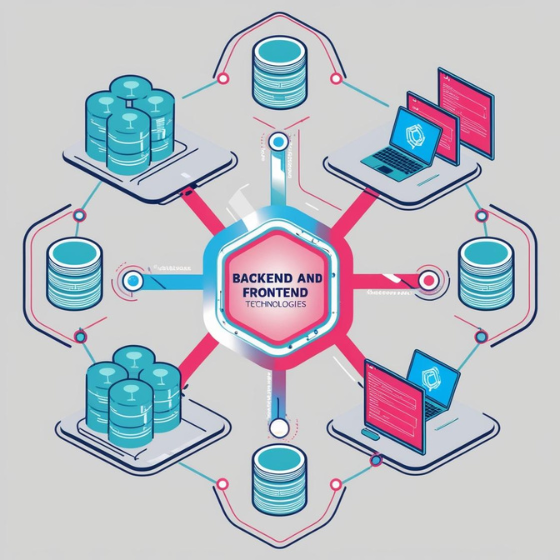Node.js has become a popular choice for building scalable and efficient server-side applications. However, as with any technology, security is a crucial consideration in Node.js development. Securing Node.js applications involves addressing various vulnerabilities and implementing best practices to protect data and ensure application integrity. This blog will provide an in-depth look at how to secure Node.js applications, covering essential security practices and tools to help developers build robust and secure applications.
Understanding Node.js Security Risks
1. Common Security Vulnerabilities
Before diving into security practices, it’s important to understand common vulnerabilities associated with Node.js applications:
- SQL Injection: Occurs when malicious users manipulate SQL queries to gain unauthorized access to data.
- Cross-Site Scripting (XSS): Involves injecting malicious scripts into web pages viewed by other users.
- Cross-Site Request Forgery (CSRF): Tricks users into executing unwanted actions on a web application where they are authenticated.
- Insecure Dependencies: Using outdated or vulnerable third-party libraries can introduce security risks.
2. Importance of Security in Node.js
Node.js applications are often exposed to the internet, making them susceptible to various threats. Securing your Node.js application helps protect sensitive data, prevent unauthorized access, and ensure the overall integrity of the application. Implementing security best practices minimizes the risk of breaches and enhances user trust.
Best Practices for Securing Node.js Applications
1. Use Secure Coding Practices
To mitigate security risks, adopt secure coding practices from the outset:
- Input Validation: Always validate and sanitize user inputs to prevent injection attacks and other malicious activities. Use libraries such as
validatorto ensure inputs meet expected formats and criteria. - Escape Outputs: Properly escape user-generated content before displaying it on the web page to prevent XSS attacks. Libraries like
xsscan assist in sanitizing output. - Use Parameterized Queries: When interacting with databases, use parameterized queries or prepared statements to prevent SQL injection attacks.
2. Secure Dependencies
Managing dependencies is crucial for maintaining application security:
- Regular Updates: Keep your dependencies up-to-date to benefit from the latest security patches and improvements. Use tools like
npm auditto identify and address vulnerabilities in your dependencies. - Review Packages: Only use well-maintained and reputable packages from trusted sources. Avoid using packages with known vulnerabilities or poor maintenance histories.
3. Implement Authentication and Authorization
Secure your application’s access control mechanisms:
- Use Strong Authentication: Implement strong authentication methods, such as multi-factor authentication (MFA), to verify user identities. Libraries like
passportoffer various authentication strategies. - Role-Based Access Control (RBAC): Define user roles and permissions to control access to resources and functionalities within your application. Ensure that users can only access data and features relevant to their roles.
4. Protect Against Common Attacks
Address common security threats with appropriate measures:
- Prevent CSRF Attacks: Use anti-CSRF tokens to protect against Cross-Site Request Forgery attacks. Libraries like
csurfcan help generate and validate tokens for secure requests. - Implement Rate Limiting: Protect your application from abuse and denial-of-service attacks by implementing rate limiting. Libraries like
express-rate-limitcan help control the number of requests from a single IP address.
5. Secure Data Transmission
Ensure that data transmitted between clients and servers is secure:
- Use HTTPS: Encrypt data in transit by using HTTPS instead of HTTP. Obtain and configure SSL/TLS certificates to secure communication between the server and clients.
- Secure WebSockets: If using WebSockets, ensure that they are secured with HTTPS to prevent eavesdropping and data tampering.
6. Handle Errors and Exceptions Securely
Proper error handling helps maintain security and stability:
- Avoid Detailed Error Messages: Do not expose detailed error messages to users, as they can provide attackers with insights into your application’s inner workings. Use generic error messages and log detailed errors securely.
- Implement Centralized Error Handling: Use centralized error-handling mechanisms to capture and manage errors consistently across your application. This approach helps ensure that errors are handled appropriately and securely.
7. Secure Your Environment
Protect the environment where your Node.js application runs:
- Use Environment Variables: Store sensitive information, such as API keys and database credentials, in environment variables rather than hardcoding them in your application. Tools like
dotenvcan help manage environment variables securely. - Configure Security Headers: Implement security headers such as Content Security Policy (CSP), X-Content-Type-Options, and X-Frame-Options to protect against various attacks and enhance the security of your application.
8. Regular Security Audits
Conduct regular security audits to identify and address vulnerabilities:
- Automated Tools: Use automated security tools and scanners to assess your application for potential vulnerabilities. Tools like
npm auditandSnykcan help identify and remediate security issues. - Manual Reviews: Perform manual code reviews and security assessments to uncover potential risks that automated tools might miss. Engage security experts to conduct thorough audits of your application.
Conclusion
Securing Node.js applications is an essential aspect of modern web development. By understanding common security risks and implementing best practices, developers can protect their applications from various threats and ensure the safety of user data. Adopting secure coding practices, managing dependencies, and protecting against common attacks are crucial steps in building a secure Node.js application. Regular security audits and a proactive approach to security will help maintain the integrity and reliability of your application in the ever-evolving landscape of cybersecurity.







